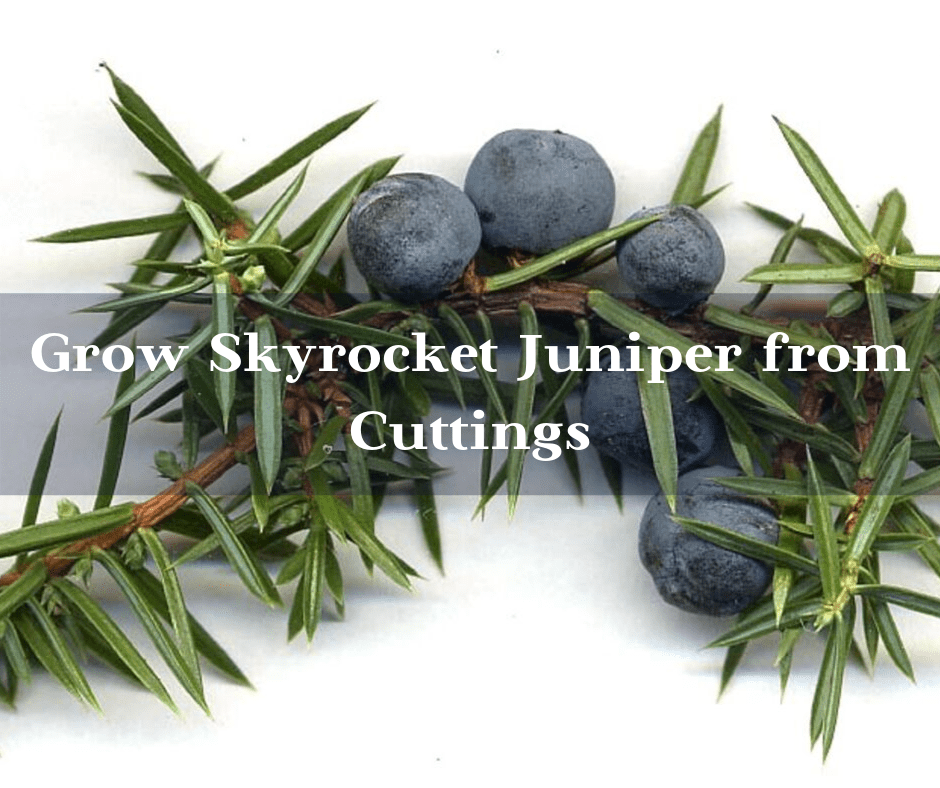This post may contain affiliate links. As an Amazon Associate we earn from qualifying purchases.
What is the best way to propagate a Meyer Lemon Tree? Read on to find out.
Lemon trees are so decorative – whether grown indoors or out. The Meyer lemon (Citrus × meyeri), though just as striking, is actually a cross between a mandarin and a citron, so it has different qualities than your basic lemon: it’s sweeter, the skin is thinner and it’s heavenly to cook with. Best of all, if grown in a pot, it remains well-mannered and somewhat small.
Since citrus trees tend to be pricey at the nursery, I grow my own from cuttings or grafting. Why not seed? “The Meyer lemon can be propagated by seed, although it is highly susceptible to damping-off, cutting and grafting are the recommended mode of propagation for this plant,” according to experts at the University of Arizona.
I should add that it also doesn’t come true from seed, so the fruit that it produces won’t be a Meyer lemon.

What is a Meyer lemon anyway?
Government employees, as a group, get a bad rap in the United States. But some think it’s undeserved. Take Frank Meyer, for instance. According to the University of California, Riverside, Mr. Meyer was “… a plant explorer with the U.S. Department of Agriculture.
In 1908, upon leaving Beijing, China, Meyer brought home to the U.S. a small citrus tree. While there are a few disagreements about the type of citrus, everyone agrees it is a hybrid. Here are some of the hypotheses of its parentage:
- “… a cross between a lemon and sweet orange — so not a true lemon.” (gregalder.com)
- “… a cross between a citron and a mandarin/pomelo.” (Wikipedia quoting research published in the Annals of Botany)
- “Meyer lemons are a cross between a regular lemon (Eureka and Lisbon varieties) and a mandarin orange. (Stark Brothers Nurseries)
I think I’ll stick with number two.
The best way to propagate a Meyer lemon is via cuttings, so let’s get into that process.
Preparing to propagate a Meyer lemon tree
Grab the following supplies before getting started:
- Any container with holes in the bottom for water drainage. I save my 1-gallon plastic nursery pots, sterilize them (learn how here) and reuse them when rooting citrus cuttings.
- A commercial seed starting mix. I recommend Pro Mix for its fungicide. Yes, seed starting mixes can be pricey, but they’re typically soilless and sterile, which helps to avoid rotting the cutting.
- Sharp, sterilized scalpel or extra sharp snippers.
- Paper towels
- Rooting hormone
The soil must be completely wet before planting the cutting so pour water over it and stir it, mixing until it is saturated. If there’s a lot of peat in the mix you may find yourself repeatedly pouring and stirring, but it’s important that the mix be evenly moist.
Next, create a planting hole for your cutting. I keep a pencil on the potting bench just for this purpose. Set the pot in the sink to drain while you take the cutting.
Taking the Meyer lemon cutting
Although cuttings taken at any time when the Meyer lemon tree is in active growth will root, you’ll have the best luck if you take the cutting in late spring or early summer. We use a scalpel on soft cuttings but a sharp razor blade or ultra-sharp snippers will work just as well.
Take the cuttings from the tips of branches. Ensure the following when considering a stem to cut:
- It has two to three nodes
- It does not have fruit
- It isn’t flowering
Measure the stem from the tip toward the tree and cut off 8 to 10 inches. It is critical to keep the cutting moist until you stick it, so wrap it in a moist paper towel and place it in a bag or bucket to keep it out of the sun.
Preparing the Meyer lemon cutting
Snip off all but the top three leaves from the stem. These will help the cutting carry out respiration while it’s forming roots. Then, check the length of the cutting to ensure there aren’t any small buds. Use your fingers to rub off any that you find.
Use your scalpel or razor blade to cut one inch off the cut-end of the stem, making the cut at a 45-degree angle, then lightly scrape the bottom inch of the cutting with the scalpel or blade. Don’t scrape too deeply – just enough to rough it up a bit.
Then, dip that end of the cutting into the rooting hormone (I have good luck with Bonide Rooting Powder, but you can use whichever you have).
 Ensure that at least 2 nodes are covered with the hormone and then potting mix and then stick it into the holes in the potting mix. Press the soil around the cutting so that it makes good contact.
Ensure that at least 2 nodes are covered with the hormone and then potting mix and then stick it into the holes in the potting mix. Press the soil around the cutting so that it makes good contact.
Caring for the cutting
Now all you have to do is wait. The cutting, if kept in bright but indirect sunlight and somewhat warm (a minimum of 68 degrees Fahrenheit), should root within 8 weeks. When you see new leaves you’ll know it has rooted.
When the cutting has two sets of leaves, fertilize the soil with a 3-1-2 fertilizer, diluted to 1/4 the strength recommended on the bottle.
Don’t be in a hurry to up pot the Meyer lemon cutting. The more roots it has when transplanted, the better the chances of success. Allow it to grow on for as long as possible before moving it to the next sized pot.
Feature photo: jamiefarrant/123RF Stock Photo



